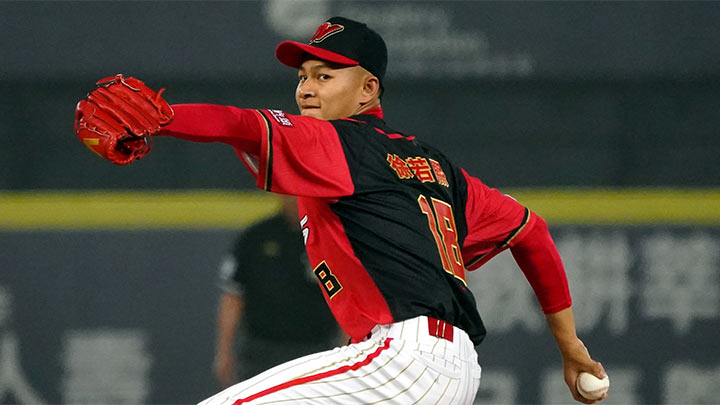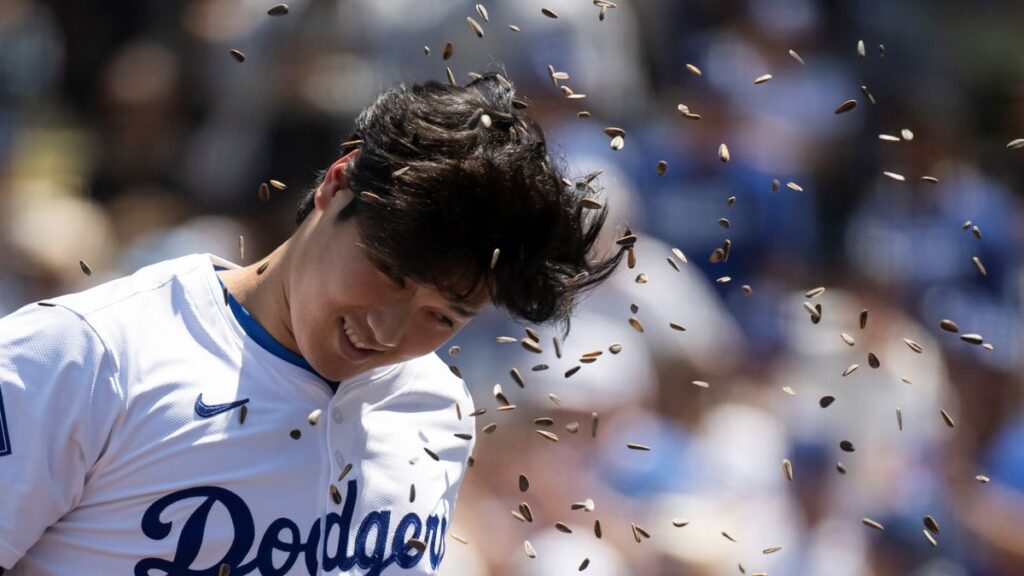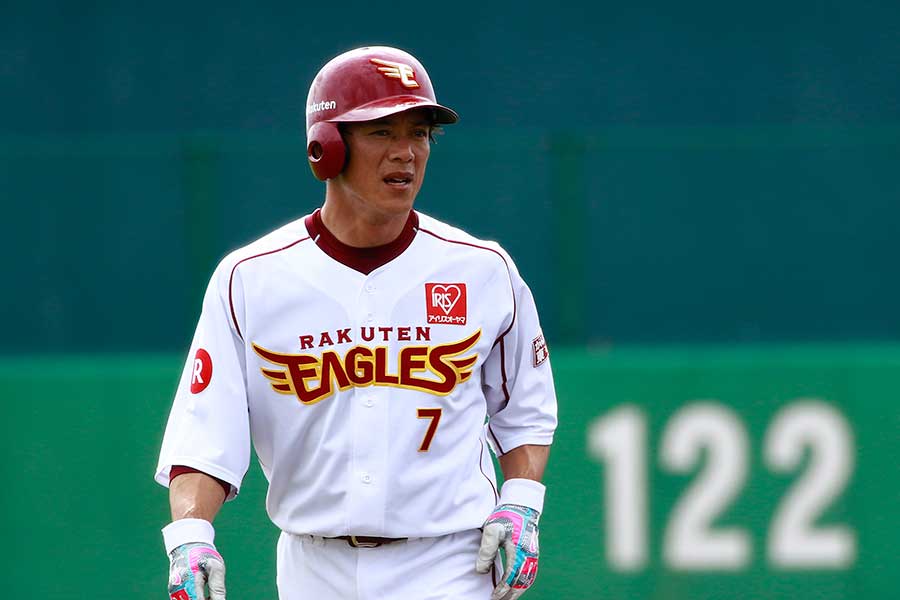
The shortstop position in baseball plays a very important role as the core of infield defense.
This position requires strong defensive ability and quick decision-making skills, but it is also important to have the right personality and characteristics.
Understanding the personality and aptitude of individuals suited to playing shortstop can improve the performance of the entire team.
In this article, we will explain in detail the skills required for short positions and the personality traits of people who are suitable for them.
We will also introduce training methods for short positions and key points for success, so please refer to it.
目次
- 1 What is the role of short positions?
- 2 Required skills for shortstops
- 3 Personality traits that are suitable for short hair
- 4 Personalities and playing styles of famous shortstops
- 5 Training methods for aiming for a short
- 6 How to identify children who are suitable for the short position
- 7 Tips for enjoying the role of shortstop
What is the role of short positions?
The shortstop position in baseball plays a very important role as the core of infield defense.
The shortstop position requires a wide defensive range, quick reactions and high skill.
The player in this position is also responsible for demonstrating leadership and overseeing the team’s defense.
Shortstop’s defensive range
The shortstop position has a wide defensive range, covering the entire infield from the center to the left side.
To handle this extensive defense, you need quick reactions and good judgment.
Shorts are frequently asked to:
1. Handling batted balls
Shortstops need to handle a variety of batted balls, including grounders and flies. They are especially required to respond quickly to hard hits and balls with irregular bounces, and to get the outs reliably.
2. Double Plays
The shortstop is a key player in double plays, covering second base and making quick throws. In particular, cooperation with the second baseman is important, and accurate throwing techniques are required.
3. Throwing accuracy:
Long-distance throws are often required, so strong arm strength and precise control are required. For example, throwing from a deep position to first base and throwing quickly to contain the runner are required.
Shortstop as the key player in infield defense
As the core of the infield defense, the shortstop plays a central role in the team’s defensive tactics.
You need the ability to work closely with other infielders and outfielders and coordinate the entire defense.
1. Communication
While on the field, the shortstop communicates closely with the other infielders and gives instructions as the situation demands, such as bunt shifts or adjusting defensive positions for specific batters.
2. Field Leadership Shortstops
exercise leadership on the field and cooperate with the pitcher and catcher to oversee the team’s defense. Shortstops must be able to accurately grasp the situation of the game and make appropriate decisions instantly.
3. Directing double plays
The shortstop is often the center of a double play, and in cooperation with the second baseman, he executes the play quickly and accurately. For this reason, quick movement and accurate throwing technique are important.
Shortstop players are expected to have both excellent defensive ability and strong leadership skills.
They are always at the heart of the team’s play, playing an important role in supporting the team’s defensive tactics.

Required skills for shortstops
The shortstop position is one of the most skill-demanding positions in baseball.
There are multiple specific skill sets required to be successful in this position.
Below we will go into detail about the key skills required for the shortstop position and the practice and training you can use to improve them.
Reflexes and reaction speed
One of the most important skills at shortstop is reflexes and reaction time.
The shortstop, located in the center of the infield, needs to be able to move quickly in both directions to cover a wide defensive range.
You need the ability to react instantly to hard hits and irregular bounces.
1. Instantaneous reaction ability
To train reflexes, it is effective to practice in a way that requires instantaneous reaction. For example, drills such as a coach hitting the ball irregularly or catching balls that are thrown randomly are effective. In addition, practicing with a pitching machine in a batting cage can also help improve the ability to react to fast balls.
2. Improve your footwork
Footwork is also important for shortstops, as they need to move quickly to hit the ball. By incorporating footwork drills such as side steps and back pedals, you can move smoothly from side to side. This will further improve your reaction time to the ball.
3.
Visual training is also effective for improving reflexes. By incorporating visual practice to instantly judge the trajectory of the ball, reaction time can be shortened. For example, there are visual training tools to train dynamic vision and methods to learn pitcher’s throwing motion through video analysis.
Throwing Accuracy
The shortstop position requires throwing long distances from the center of the infield, so strong arm strength and accurate throwing technique are essential.
In particular, quick throws to first base and during double plays are important.
1. Improve your arm strength.
To improve your throwing accuracy, you must first strengthen your arm strength. Strengthen your shoulder and arm muscles through weight training and resistance training. Throwing practice using a pitching machine is also effective. This will allow you to throw a stable ball even over long distances.
2. Improve your throwing form
To throw accurately, it is important to learn the correct form. Under the guidance of a coach, you will repeatedly practice the basic movements of throwing to master smooth, efficient movements. It is also effective to check your own form through video analysis and identify areas for improvement.
3. Double play practice
The shortstop must throw the ball quickly and accurately to set up a double play. Double play practice strengthens the team’s coordination with the second and first basemen and improves the technique of passing the ball accurately in a short time. By practicing with realistic scenarios, you can improve your performance in the game.
Daily practice and training are essential to developing these skills.
To be successful at shortstop, it is important to have good reaction time and accurate throwing technique.
By mastering these skills, you will be able to play an active role as the core of a team.
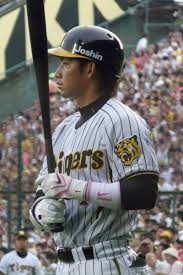
Personality traits that are suitable for short hair
The shortstop position is a very important position in baseball.
Here, we will explain in detail the personality and characteristics of people who are suited to short hair and give specific examples.
Understanding the personality traits that are best suited to shortstop can help players and their coaches bring out the best in them.
Leadership and judgement
The short position requires strong leadership and quick decision-making skills.
This position requires players to see the entire field, coordinate with other infielders and outfielders, and give defensive instructions.
1. Role as a team leader
The shortstop is the key player in the infield defense and leads the team. He makes instant decisions depending on the situation during the game and gives instructions to other players, improving the defensive ability of the entire team. For example, he is required to make decisions that take the whole game into account, such as instructing bunt shifts and adjusting defensive positions for specific batters.
2. Quick decision-making skills
The shortstop position always requires quick and accurate decision-making. The ability to instantly choose the best play, such as handling batted balls, double plays, and preventing stolen bases, is necessary. This requires a wealth of experience and deep understanding, and the ability to always calmly analyze the situation.
Calmness and mental strength
Calmness and mental strength are also important factors for success in the shortstop position.
You need to be able to remain calm under pressure and minimise mistakes.
1. Mental strength to withstand pressure
Shortstops often face pressured situations during a game. For example, they need the mental strength to remain calm even in high-stress situations such as a bases-loaded pinch or a walk-off game in extra innings. For this reason, shortstops need mental strength and concentration.
2. Recovering from mistakes
Baseball is a sport where mistakes are inevitable. It is important for shortstops to recover quickly even if they make a mistake and focus on the next play. Players who can keep playing with a positive attitude and not be dragged down by negative emotions are suited to the shortstop position.
3. Calm judgment
A calm and collected personality is a great strength for the shortstop position. By calmly dealing with various situations during the game and making the right decisions, you can stabilize the team’s defense. This requires calmness, which can be cultivated through accumulating match experience.
Players with the personality traits that are suited to playing shortstop can play an important role on a team and perform well.
Players who combine leadership, judgment, composure and mental toughness are more likely to succeed at the shortstop position.

Personalities and playing styles of famous shortstops
Each of the great shortstops of all time had their own unique personality and playing style that contributed to their success.
Here we will take a closer look at the characteristics of Kazuo Matsui and Derek Jeter.
Characteristics of Kazuo Matsui
Kazuo Matsui is a famous shortstop who played in both Japanese professional baseball and Major League Baseball.
His playing style and personality influenced many fans and players.
1. Outstanding defensive ability and batting sense
Matsui is known for his outstanding defensive ability. With his quick reactions and accurate throwing, he has an outstanding ability to handle difficult hits. He also has high batting skills, and has made a great contribution to his team with his batting average and long hit power.
2. Physicality and Speed
Matsui is also known for his physical strength and speed. His base running and wide defensive range, which he made the most of, stood out from other players. This physical strength supported his defensive and offensive abilities.
3. Mental toughness
He was a very mentally tough player and was able to remain calm even under pressure. This was something he had developed over his long career, and he was also highly trusted by his teammates. His calmness and concentration were especially evident in the crucial moments of the game.
4. Aggressive Playing Style
Matsui has always maintained an aggressive playing style. Whether in defense or batting, he is known for always taking an offensive stance and doing his best whenever he has the chance. This aggressiveness is one of the factors that led him to become a top player.
Derek Jeter’s Leadership
Derek Jeter is a long-time shortstop for the New York Yankees in Major League Baseball.
His leadership and playing style were role models for many players.
1. Outstanding leadership
Jeter demonstrated outstanding leadership as the team captain. He was always calm, made fair decisions, and was considerate of his teammates. His presence was a major factor in raising the morale of the entire team.
2. Clutch hitter
Jeter stood out for his strength in important situations. As a so-called clutch hitter, he has hit the ball that changes the flow of the game many times. His performance in the postseason in particular is legendary, and he has recorded many decisive hits.
3. Absolute reliability
Jeter was known for his stable play and reliability. He earned the absolute trust of his team by continuing to play with few mistakes, both in defense and batting. In particular, his wide defensive range and accurate throwing saved him from many pinches.
4. Professionalism
Jeter always maintained a professional attitude and tried to be a role model for the team. His attitude in practice and preparation for games were perfect, and he was an ideal leader for the younger players.
The success of Kazuo Matsui and Derek Jeter is due not only to their exceptional skills, but also to their leadership, mental strength and professionalism.
Their playing styles and personalities will be a great reference for many players aspiring to play at shortstop.
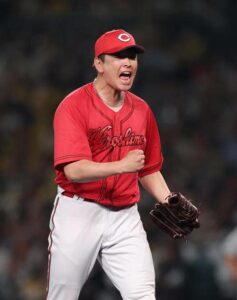
Training methods for aiming for a short
The shortstop position is a very important position in baseball and requires specific training and practice to be successful.
Below we will introduce a specific training menu and effective practice methods for the short position.
Physical Training
Comprehensive physical training is essential to develop the strength and muscle tone required for the shortstop position.
Because the shortstop requires quick movement and strong throwing, it is important to train the muscles of the entire body in a balanced manner.
1. Strength training
Strength training is the foundation for building the power needed for short distances. It is particularly effective to focus on training the following areas:
- Lower Body : Build lower body strength through exercises like squats and deadlifts, which gives you strong legs for a quick start and agility.
- Core : Core exercises such as planks and Russian twists improve core stability. A strong core is also important for throwing and batting.
- Shoulders and Arms : Do push-ups and dumbbell presses to strengthen your shoulders and arms, which will help you throw the ball further and more accurately.
2. Endurance training
Since shortstops move around a lot during a match, endurance is also important. By incorporating interval training and running, you can improve your cardiopulmonary function and make your body less prone to fatigue even during long periods of play.
3. Agility Training:
Do ladder drills and agility drills to improve your agility and reaction time, which will improve your ability to react quickly and respond to incoming balls.
Practical defensive training
Practice to hone the skills needed for actual defense is also essential.
The short position requires the ability to respond quickly and accurately to a variety of situations.
1. Catching drills
We will conduct catching drills to handle various types of batted balls. We will practice with batted balls that are expected to be caught in an actual game, such as grounders, flies, and liners. In particular, we will train to be able to accurately catch batted balls that have difficult bounces or require a sudden change of direction.
2. Throwing Drills
In the throwing drills, you will learn to throw accurately and powerfully. You will practice various scenarios, such as long-distance throws from shortstop to first base and quick throws for double plays. You will be thorough in throwing with the correct form and improve your throwing accuracy and speed.
3. Practice double plays
As a shortstop, it is also essential to practice double plays. Strengthen your cooperation with the second and first basemen to ensure quick and accurate play. Set up practical scenarios and practice simulating situations that may occur during a game.
4. Expanding your defensive range
Practice to expand your defensive range is also important. Improve your footwork to move over a wide range of hits and improve your ability to react quickly and catch up with the ball. This will expand your defensive range and improve your team’s defensive ability.
Through these training and practice sessions, you can effectively develop the skills and physical strength required for the shortstop position.
With continued effort and proper guidance, you can achieve success as a shortstop.

How to identify children who are suitable for the short position
In order to determine whether a child is suited to shortstop, it is important to evaluate their personality and aptitude.
Proper support and mental care from parents is also essential.
Below we will explain in detail how to assess and support you.
Personality and aptitude tests
In order to determine whether a child is suitable for the short position, it is effective to conduct a personality assessment and aptitude test.
1. Leadership The
shortstop position requires leadership to bring the team together. Observe whether the child is proactive in communicating with the team and has the desire to lead other players. For example, giving instructions during practice or games and encouraging teammates are signs of leadership.
2. Judgment and calmness
Instant judgment and calmness during a match are also important factors. Check whether your child can remain calm under pressure and recover quickly after making a mistake. Observe how your child grasps the situation and makes decisions during practice and matches.
3. Physical Ability
Shortstop requires quick movements and high reflexes. Through physical tests, we evaluate children’s agility and reaction speed. Specifically, we conduct speed tests and agility drills to confirm the athletic ability required for the shortstop position.
Parental support and mental care
In order for their children to succeed in the shortstop position, parental support and mental care are important.
Think about how you as a parent can help.
1. Positive support
It is important to be actively involved in your child’s practice and games and to support them. Motivate your child by giving them positive feedback after games and practice. For example, use specific praise such as “Your play today was great.”
2. Proper Advice
Advice on playing is also important. However, be sure to give constructive feedback without putting too much pressure on your child. When a child makes a mistake, it is important to think together about how they can improve next time.
3. Mental care:
Don’t forget to take care of the mental aspects of sports. When children feel stressed or overwhelmed by pressure, it’s important to teach them relaxation techniques and set aside time for hobbies to help them refresh themselves.
4. Long-term perspective
As a parent, it is also important to watch your child’s growth from a long-term perspective. We provide support with an eye to the child’s future, not just short-term results. For example, we promote holistic development through appropriate training programs and mental training.
By implementing these points, you can lay the foundation for your child to be successful in the shortstop position.
As parents, we can provide the right support and mental care to help our children’s talents flourish.
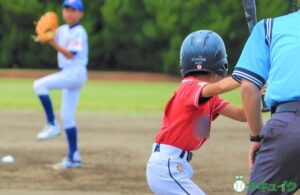
Tips for enjoying the role of shortstop
To enjoy short positions, you need the right mindset and some tips to keep you motivated.
Below, we will explain in detail the importance of teamwork and the joy of challenges.
By keeping these points in mind, you can maximize the appeal of the short position and enjoy playing.
The Importance of Teamwork
The shortstop position plays a vital role as the backbone of the team’s defense.
By overseeing the entire team’s defense and working closely with other players, you can improve your team’s performance.
1. Strengthening communication
The shortstop needs to communicate closely with the infielders and outfielders. By accurately conveying defensive position adjustments and play instructions, the whole team can play as one. For example, it is important to instruct defensive shifts according to the batter’s tendencies and the situation.
2. Cooperation and collaboration
Shortstops often need to cooperate with other players, such as in double plays and containing runners. By playing in sync with the second and first basemen, you can improve the accuracy of your defense. In particular, quick collaboration during double plays can make the difference between winning and losing.
3. Supporting teammates
It is also important for shortstops to support other players. When a teammate makes a mistake, they should offer words of encouragement, creating a positive environment that will boost the morale of the entire team. They are expected to demonstrate leadership and inspire the team.
Enjoying the challenge
The shortstop position faces a lot of pressure and difficulties during a match.
Having the mindset to enjoy these things will enable you to play more fulfillingly.
1. Positive Attitude
It is important to take on challenges with a positive attitude and not be afraid of failure. Even if you make a mistake, you can become mentally stronger by focusing on the next play, finding areas to improve, and seeing it as an opportunity for growth. Having a positive mindset leads to improved performance.
2. Continuous learning
Short position players must constantly adapt to new situations. It is important to be willing to continually learn and improve your skills through practice and matches. Learning new techniques and tactics and repeating trial and error will broaden your range of play.
3. Have fun
The most important thing is to enjoy baseball. Enjoying the joy of playing with your teammates and the tension of the game will keep you motivated. Having fun will give you the strength to overcome any difficulties.
To enjoy short positions, it is essential to understand the importance of teamwork and to enjoy challenges.
By keeping these things in mind, you will be able to maximize your performance as a shortstop and truly enjoy playing baseball.
